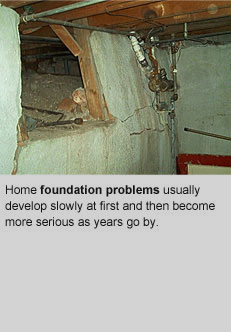Dehumidifier in your Crawl Space
The crawl space of a house is known for being one of the dampest areas, but it doesn?셳 have to be. A buildup of moisture can actually damage the support structure of a home over time, and potentially lead to the growth of mold, which can be hazardous to the health of the people who live in it. A dehumidifier can make all the difference when it comes to reducing moisture as well as the chances of mold growth and subsequent damage to the home and its occupants.
What a Dehumidifier does
A dehumidifier simply controls the amount of moisture in the area where it is placed, in this case the crawl space of a home. These devices use electricity though, which means that they can increase the cost of your monthly energy bill. It is important to maintain your dehumidifier so it is always working properly. Certain dehumidifiers require the use of electric fans to help keep the air circulating. Failure to get rid of the excess moisture in this area of your house can lead to the deterioration of wood framing as well as rust on metal components, which is the perfect breeding ground for mold and mildew.
Finding Sources of Moisture
The first step in minimizing or eliminating moisture in a crawl space is to determine where it is coming from. Whether it is a broken pipe or a leak in the roof, it will be necessary to find and repair these problems before doing anything else. While it is true that putting a dehumidifier in your crawl space can be tremendously beneficial, it does not fix leaks or drips in this area of your home. You will need to do all of the necessary repairs to stop the leaking before you put a humidifier in the crawl space. Depending on the setup of your crawl space, you may find that you will need to seal up some holes or add another lining to this part of your home before putting the dehumidifier in.
Take the time to thoroughly look over the roof on your home for any holes or signs of wear, as they might be contributing to the moisture problem in your crawl space. A leaky roof can lead to some very costly repairs later on, which is why it is a good idea to start there when trying to reduce moisture in this part of your home.
Mold and Mildew
Putting a dehumidifier in the crawlspace of your home can effectively prevent the growth of mold and mildew, but it won?셳 be able to get rid of what is already there. If you currently have mold growing in this area of your home, you will need to hire professionals to remove all traces of it as soon as possible. A dehumidifier can actually spread the mold around even more, which is why you will need to delay putting one in the crawl space until any mold that is growing is completely removed. Certain types of mold can be very damaging to the house as well as the health of those who are living in it, which is why it is so important to get rid of it right away.
Venting isn?셳 always enough
Proper venting can prevent the growth of mold and mildew by keeping moisture in a crawl space to a bare minimum, but it simply is not enough for everyone. Whether or not a dehumidifier is needed in a home depends on the area the house is located in. Homes that are in very humid climates, such as Florida, can usually benefit tremendously from a dehumidifier in the crawl space. It is impossible for all of the moisture in a crawl space to leave the area completely with just venting if the air outside is not drier than the air inside this area of the home.
Clean up
It is also important that you clear away any debris or junk in your crawl space, as doing so will make the drying process go a lot faster. After you are done cleaning this area of your house, make sure to get rid of any standing water, because it will only contribute to the buildup of moisture in your crawl space. Now you are ready to put the dehumidifier in and get it going.



